Introduction
Silicone rubber is a testament to human ingenuity, a synthetic marvel designed to meet the needs of modern industry. Made from a blend of silicon, oxygen, carbon and hydrogen, this versatile polymer has found its way into fields ranging from automotive engineering to medical technology. Its elasticity under extreme conditions, coupled with its inertness, has given silicone rubber an important place in manufacturing.
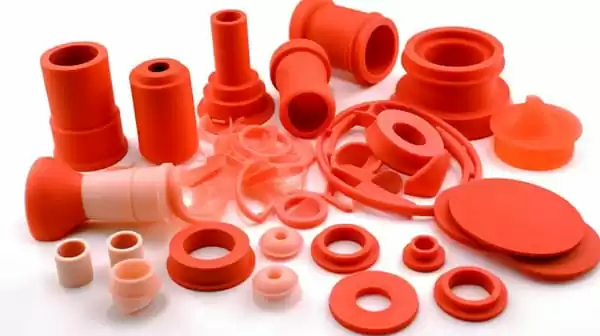
Anyone who knows a little bit about the silicone rubber industry knows that when producing silicone rubber products, a large amount of waste silicone rubber will be generated. Whether it is excess raw rubber, product burrs, or defective products, the proportion of waste silicone rubber in production is still Very big, in an era of increasing environmental awareness, the question arises: Can multifunctional silicone rubber be effectively recycled? Get an inside look at the complex interplay between recycling silicone rubber and sustainability, exploring the feasibility of recycling this ubiquitous material. Join us to understand the complexities of silicone recyclable and explore a greener, more sustainable future.
Understanding Silicone Rubber
Silicone rubber is a synthetic polymer comprised primarily of silicon, oxygen, carbon, and hydrogen atoms. This unique composition imbues silicone rubber with remarkable properties, including flexibility, heat resistance, and chemical inertness.
What Silicone Rubber is Made Of:
At its core, silicone synthetic rubber, is formed through a process that involves combining silicon with various other elements to create a polymer chain. Silicon, derived primarily from silica, is the key component, providing the material with its distinctive properties. Oxygen, carbon, and hydrogen atoms are then added to the silicon backbone to form the silicone polymer.
Common Uses of Silicone Products in Everyday Life:
Silicone products have permeated virtually every aspect of daily life, finding applications in numerous industries and household items. Some common uses include:

Kitchen Utensils and Cookware: Silicone spatulas, baking mats, and oven mitts are popular choices due to their heat resistance and flexibility.
Personal Care Products: Silicone is used in cosmetic formulations, such as shampoos, conditioners, and skin creams, for its emollient properties and smooth texture.
Medical Devices: Silicone rubber is widely used in medical implants, prosthetics, and catheters due to its biocompatibility and inertness.
Electronics: Silicone-based adhesives, sealants, and gaskets are employed to protect electronic components from moisture, heat, and vibrations.
Automotive Industry: Silicone rubber is used in gaskets, seals, and hoses for its resistance to extreme temperatures and chemical exposure.
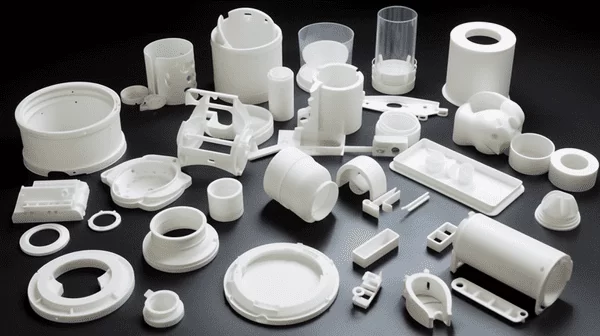
Clarification on the Biodegradability of Silicone Rubber:
Silicone compounds do not break down naturally, so waste silicone rubber cannot break down into landfills. The process of converting waste silicone rubber into silica through combustion consumes a lot of energy. Silicone rubber raw materials are expensive. The generation and accumulation of waste silicone rubber will not only occupy a large number of factories and pollute the environment, but also lead to rising costs and put great economic pressure on enterprises.

Contrary to some misconceptions, silicone rubber is not biodegradable like organic materials. Its chemical structure makes it resistant to degradation by natural processes. While silicone may eventually break down into smaller particles over a longer period of time, this process occurs at a much slower rate than biodegradable materials. So, in fact, silicone rubber is generally considered non-biodegradable. It is important to note, however, that efforts are underway to develop technologies for recycled silicone rubber to minimize its impact on the environment.
Emerging Recycling Technologies
Many people say that silicone biodegradable, but the truth is that silicone is not, and since silicone is not biodegradable, it does not physically break down in the same way as unlike plastic and release microplastics into the environment. Recycling silicone rubber requires more complex methods and machinery.
mechanical rolling cracking
Mechanical rolling cracking can be carried out on ordinary rolling mills. The waste rubber that is about to be cut into small pieces is put on the rubber mixing machine for rolling. The roller distance should be larger at the beginning.
After the rubber material is wrapped around the roller, the roller distance should be reduced. When rolled into finer pieces, it can be thinned. After gradually forming a continuous strip, the pieces can be removed and stored. The disadvantage of this method is that the waste rubber using gas phase silica is not easy to crush and the rolling time is long.
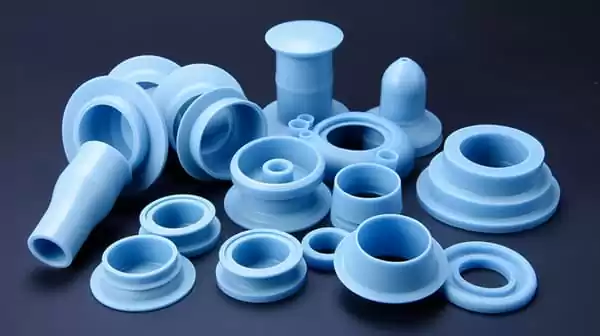
In order to shorten the rolling time and improve the rolling regeneration efficiency and the quality of the reclaimed rubber, precipitated silica can be added appropriately (about 10%) during the rolling process to crush and mix the soft and hard shredded silicone granules and shorten the regeneration time.
Direct steam thermal cracking
Direct steam thermal cracking is to put small pieces of waste rubber into a steam vulcanization tank with a pressure of about 0.5MPa (temperature 150~160°C) for 3 to 4 hours. If the hardness of the waste rubber is high, the processing time can be appropriately extended, but it should not be too long to avoid excessive degradation of the waste rubber and deterioration of performance. The heat-treated waste rubber is fully crushed on the rubber mixing machine, and then thinned out into sheets after being rolled.
When crushing, a small amount of alcohol can generally be added to increase mechanical friction and improve rolling efficiency. If you encounter sticky rollers, you can add some white carbon black or other inorganic fillers. The reclaimed rubber produced by this method has uniform quality and high plasticity.
The disadvantage is that the processing time is long and it is difficult to re-refining after storage. If a structure control agent, such as diphenylsilanediol or hydroxyl silicone oil, is added to the rubber compound, it will be easier to recycle.
Chemical Depolymerization:
This method involves breaking down silicone rubber into its molecular components through chemical processes. By cleaving the polymer chains, silicone rubber can be transformed into its constituent parts, which can then be reused to create new silicone products.
Thermal Decomposition:
Thermal decomposition techniques involve subjecting silicone rubber to high temperatures in controlled environments. This process breaks down the material into simpler compounds, which can be purified and reused in various applications.
Specialized Recycling Facilities:
Effective silicone rubber recycling requires specialized facilities equipped with the necessary technology and expertise to handle the unique properties of silicone materials. These facilities may include:
Chemical Processing Plants: Facilities equipped with reactors and purification systems for chemical depolymerization processes.
Mechanical Recycling Centers: Facilities equipped with shredders, grinders, and sorting equipment for mechanical processing of silicone rubber waste.
.jpg.webp)
Thermal Treatment Facilities: Facilities equipped with high-temperature furnaces or reactors for thermal decomposition of silicone rubber.
Research Laboratories: Research institutions and laboratories dedicated to developing and optimizing recycling technologies for silicone rubber.
By investing in specialized silicone recycling facilities and collaborating with industry partners, the silicone industry can effectively manage silicone waste and promote a more sustainable approach to material reuse and resource conservation.
The Importance of Circular Economy
Embracing a circular economy approach is paramount in promoting the recyclability of silicone rubber and fostering sustainability across industries. By reimagining the traditional linear model of “take, make, dispose,” a circular economy aims to minimize waste, maximize resource efficiency, and prolong the lifespan of products and materials. Let’s delve into the role of a circular economy in promoting silicone rubber recyclability and explore strategies to achieve this goal.
Role of Circular Economy in Promoting Silicone Rubber Recyclability:
A circular economy provides a framework for designing products and systems that prioritize resource conservation and minimize environmental impact. When applied to silicone rubber, this approach encourages the development of closed-loop systems where silicone waste is collected, processed, and reintroduced into the manufacturing cycle. By emphasizing the reuse, remanufacturing, and recycling of silicone materials, a circular economy mitigates the need for virgin resources and reduces the burden on landfills.
Strategies to Promote Silicone Product Recyclability:
Design Considerations: Designing silicone products with recyclability in mind is crucial for facilitating the recycling process. This includes using mono-materials or easily separable components to simplify disassembly and recycling. Designers can also opt for standardized shapes and sizes to streamline sorting and processing at recycling facilities.
Material Innovation: Investing in research and development of innovative silicone formulations can improve recyclability. Developing silicone blends with enhanced compatibility and easier processing properties can facilitate recycling without compromising product performance.
Consumer Education: Educating consumers about the importance of proper disposal and recycling of silicone products is essential. Providing clear instructions on how to identify recyclable silicone items and where to dispose of them can encourage responsible behavior and increase recycling rates.
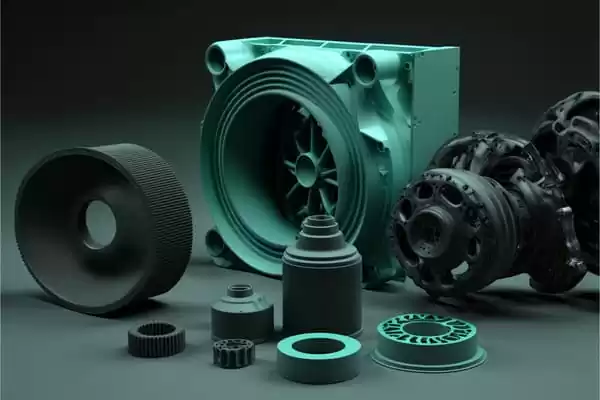
Extended Producer Responsibility (EPR): Implementing EPR policies holds manufacturers accountable for the end-of-life management of their products. By incentivizing companies to take responsibility for collecting and recycling silicone products, EPR programs promote a circular economy mindset and encourage investment in recycling infrastructure.
Comparison of Silicone Products with Plastics in Terms of Eco-friendliness:
Silicone products offer several eco-friendly advantages over traditional plastics:
Durability: Silicone products are highly durable and long-lasting, reducing the need for frequent replacements and minimizing waste generation.
Non-toxicity: Unlike some plastics that contain harmful chemicals like BPA, silicone is non-toxic and safe for food contact and personal care applications.
Recyclability: While both silicone and plastics can be recycled, silicone’s higher heat resistance and chemical stability make it more conducive to multiple recycling cycles without degradation of quality.
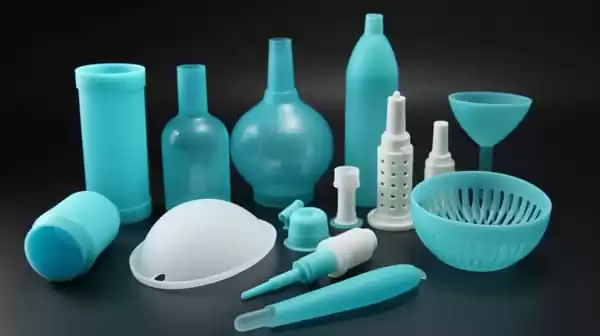
Conclusion
Silicone rubber offers numerous benefits in terms of performance and versatility, but its sustainability remains a topic of concern. While challenges exist in recycling silicone products, advancements in technology and a shift toward circular economy principles hold promise for a more sustainable and recycle silicone rubber industry. By continuing to invest in research, development, and collaboration, we can work toward a future where silicone rubber is recycled efficiently, reducing waste and preserving valuable resources for generations to come.



